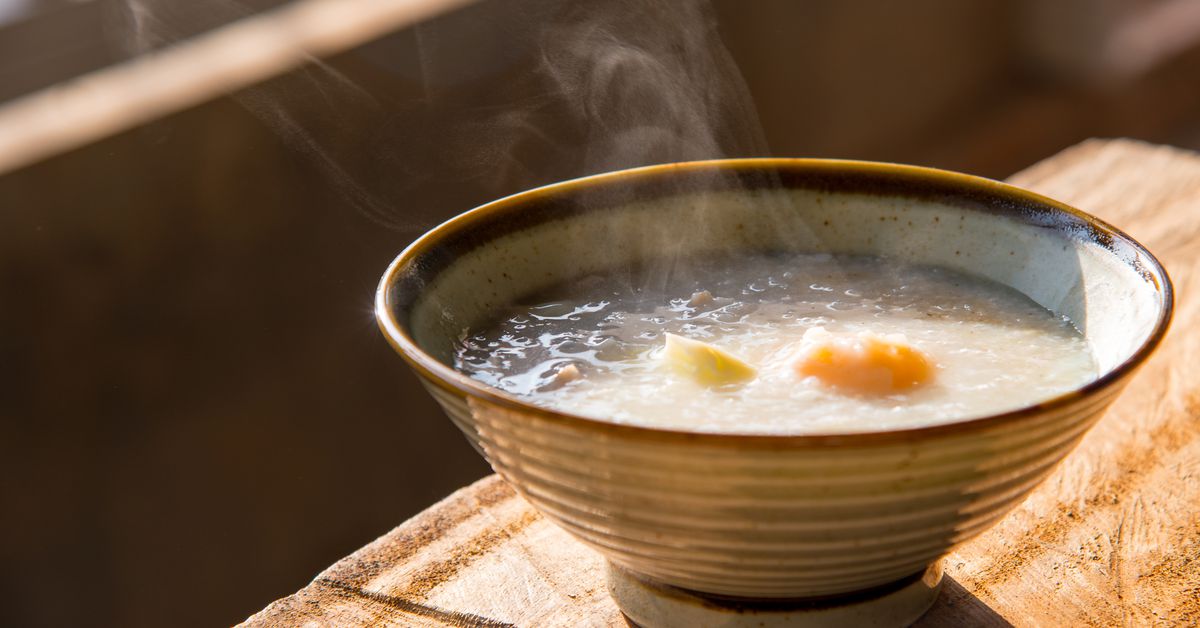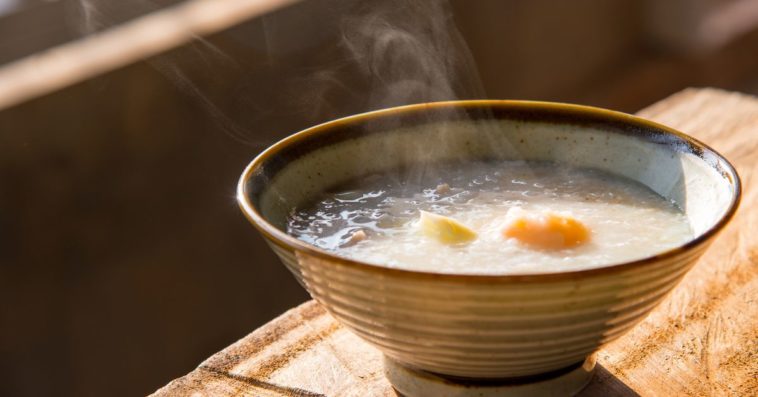Congee Is the Ultimate Comfort Food

Something magical happens to rice if left to boil for too long in an excess of water: The grains break down, absorbing the liquid and softening, creating a one-pot wonder of thick, stodgy starch that’s as fragrant as it is warming.
This is, of course, congee: the porridge — also referred to as jook, zhou (my name for it, having a Northern Chinese mother), or myriad other names — that likely originated in China but is eaten in many Asian countries.
Congee has a history as a famine food — rice stretched to last with the addition of extra water — and, more commonly nowadays, the ideal sick dish. Low-effort and gentle on the stomach, it’s embraced as a go-to for belly aches, colds, or days of general discomfort. That’s how I’ve always known it; my grandmother, who lived with us for years while I was growing up, would make congee on the regular, but particularly during the winter or when any of us felt ill. It’s just rice and water (usually one cup of rice to four or five cups of water, depending on one’s preference for watery or thick) simmered for at least 25 minutes (depending on one’s level of impatience). Sometimes she would add tapioca or sago pearls and sugar to taste, turning the dish into a dessert of sorts. Congee could last for half a week; we poured in a little water each time and boiled it anew, further breaking down the rice until by the third day or so it was even more glutinous, a glorious transfiguration of texture.
There are many other ways to eat congee, varying depending on the cuisine, geographic region, or just one’s own tastes. You can make it with stock, top it with pork floss, add a century egg or a deep-fried youtiao cruller. There are more recent takes on the age-old dish, too, as congee has reached new heights of trendiness in recent years, appearing on the menus of hip restaurants in both China and the U.S. A few years ago in Beijing, I met up with a cousin at a restaurant specializing in congee. The place was popular with the district’s plethora of university students; I saw tables full of people younger and cooler than me gossiping and laughing over large vessels of congee served with seafood, meat, preserved vegetables, sauces, and so much more. Here was the humble, homey bowl — and it was in vogue.
But I prefer the plain, two-ingredient, at-home version whenever I have a craving for congee, which I confess is almost never. I only make it when I’m truly sick or, sometimes simply sick for home, although whether that longing is for my mother or grandmother or just the feeling of being cared for as a child, I don’t know. When my tastebuds are dulled, there’s a soothing blandness to congee, primarily satisfying in its gloopy texture on the tongue — as if I’m eating baby food again — and its solid comfort. Like swallowing hot mouthfuls of nothing that light a candle in the stomach, filling it with a gentle warmth that lingers.
Published at Mon, 01 Feb 2021 21:22:37 +0000






Comments
Loading…